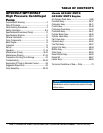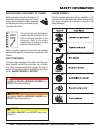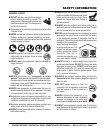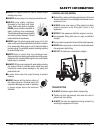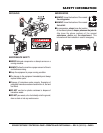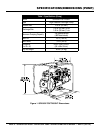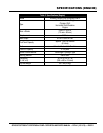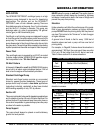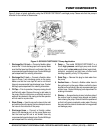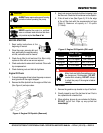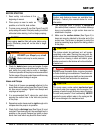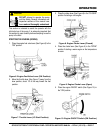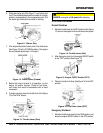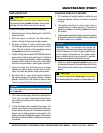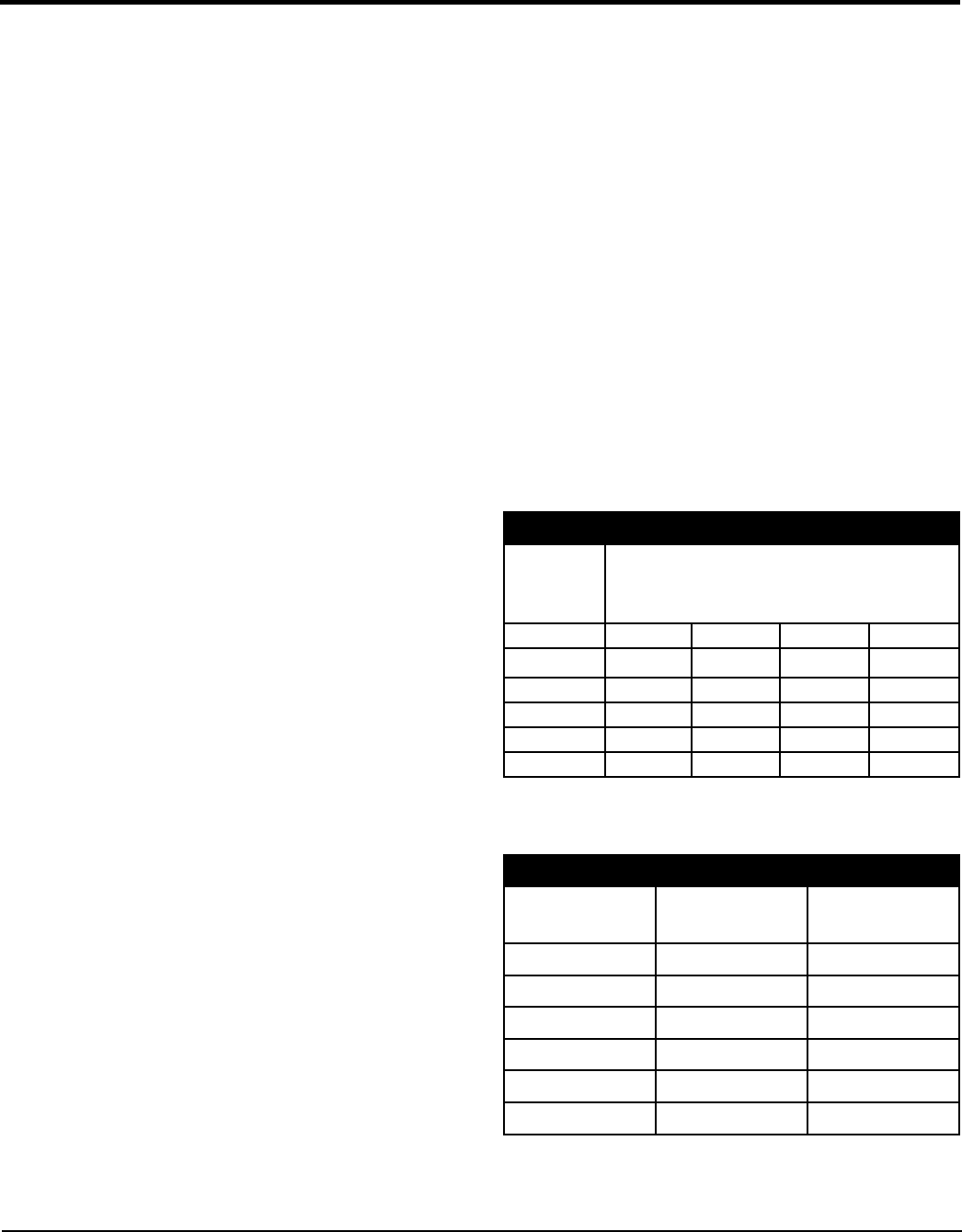
GENERAL INFORMATION
The QP205SLT/QPT205SLT centrifugal pump is a high
pressure pump designed to be used for dewatering
applications. The suction port on the QP205SLT/
QPT205SLT uses a 2-inch diameter opening. There are
three discharge ports on the pump, 2 are 1-inch in diameter
and the third is 1.5-inches in diameter. This pump can
discharge water at a rate of approximately 126 gallons/
minute (gpm) or 480 liters/minute (lpm).
Centrifugal or self-priming pumps are designed to purge
air from the suction line and create a partial vacuum in the
pump body. The reduced atmospheric pressure inside the
pump allows water to flow through the suction line and into
the pump body. The centrifugal force created by the rotating
impeller pressurizes the water and expels it from the pump.
Power Plant
This centrifugal pump is powered by an 8.0 HP, air-cooled
4-stroke, single-cylinder HONDA GX240 gasoline engine
that incorporates a low “Oil Alert Feature”.
In the event of low oil or no oil, the HONDA GX240 engine
has a built-in oil alarm engine shutdown feature. If the oil
level is low the engine will automatically shutdown.
Standard Centrifugal Pump
Standard centrifugal pumps provide an economical
choice for general purpose dewatering. These types of
pumps should only be used in clear water applications
(agricultural, industrial, residential) as they have a limited
soild handling capability of only 10% by volume.
Suction Lift
This pump is intended to be used for dewatering applications
and is capable of suction lifts up to 25 feet at sea level. For
optimal suction lift performance keep the suction hose or
line as short as possible. In general always place the pump
as close to the water as possible.
Pump Support
The pump should always be placed on solid stationary
ground in a level position.
place the pump on soft soil. The suction hose or
pipe connection should always be checked for tightness
and leaks. A small suction leak in the hose or fittings could
prevent the pump from priming.
Elevation
Higher elevations will effect the performance of the pump.
Due to less atmospheric pressure at higher altitudes,
pumps have the priming ability that they have at
sea level. This is due to the “thinner air” or lack of oxygen
at higher altitudes.
A general rule of thumb is that for every 1,000 feet of
elevation above sea level a pump will lose one foot of
priming ability.
For example, in Flagstaff, Arizona where the elevation is
approximately 7,000 feet, the pump would have a suction
lift of only 18 feet rather than the 25 feet at sea level.
Table 3 shows suction lift at various elevations.
Altitude
Feet
(Meters)
Suction Lift in Feet (Meters)
Sea Level 10.0 (3.048) 15.0 (4.572) 20.0 (6.096) 25.0 (7.620)
2,000 (610) 8.80 (2.680) 13.2 (4.023) 17.6 (5.364) 22.0 (6.705)
4,000 (1,219) 7.80 (2.377) 11.7 (3.566) 15.6 (4.754) 19.5 (5.943)
6,000 (1,829) 6.90 (2.103) 10.4 (3.169) 13.8 (4.206) 17.3 (5.273)
8,000 (2,438) 6.20 (1.889) 9.30 (2.834) 12.4 (3.779) 15.5 (4.724)
10,000 (3,048) 5.70 (1.737) 8.60 (2.621) 11.4 (3.474) 14.3 (4.358)
Table 4 shows percentage drops in performance as
elevation increases.
Table 4.
Altitude
Feet (Meters)
Discharge Flow Discharge Head
Sea Level 100% 100%
2,000 (610) 97% 95%
4,000 (1,219) 95% 91%
6,000 (1,829) 93% 87%
8,000 (2,438) 91% 83%
10,000 (3,048) 88% 78%



